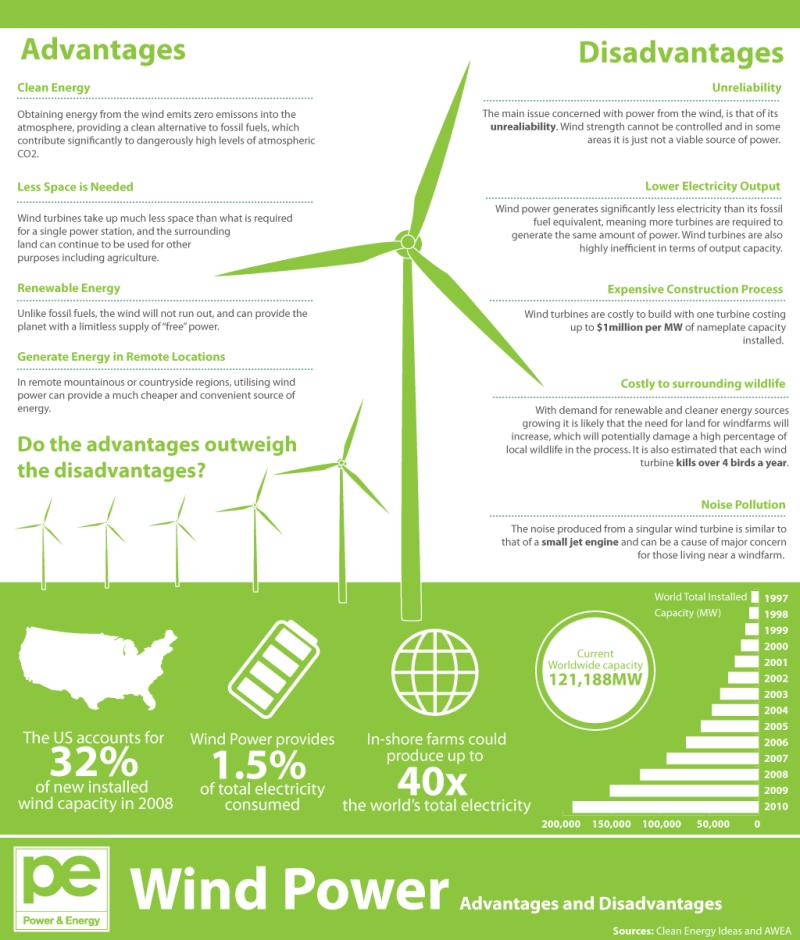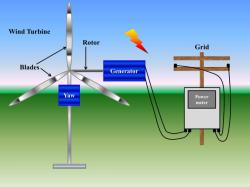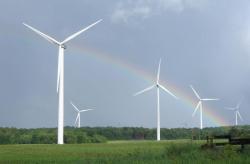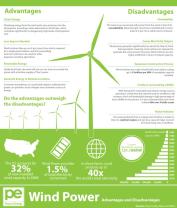How is wind energy a good source of energy?
Wind energy is considered a sustainable and environmentally friendly source of power for several reasons:
Renewable Resource: Wind energy is generated by harnessing the kinetic energy of the wind. Wind is a renewable resource, meaning it won't be depleted as long as the sun continues to shine and the Earth's atmosphere remains in motion.
Reduces Greenhouse Gas Emissions: Wind power produces electricity without emitting greenhouse gases such as carbon dioxide (CO2) and methane. This significantly reduces the carbon footprint of electricity generation and helps combat climate change.
Low Environmental Impact: Wind turbines have a relatively low environmental impact when compared to many other energy sources. They do not produce air or water pollution, and they have a smaller physical footprint compared to fossil fuel power plants.
Minimal Water Usage: Unlike many conventional power plants, wind turbines do not require large quantities of water for cooling, reducing water consumption in power generation.
Local Economic Benefits: Wind farms create jobs and stimulate local economies, particularly in rural areas where they are often located. They provide income for landowners who lease their land for wind turbine installations.
Energy Independence: Wind energy contributes to energy independence by diversifying the energy mix and reducing reliance on fossil fuels. This can enhance a nation's energy security and reduce exposure to energy price fluctuations.
Scalability: Wind energy can be harnessed at various scales, from single small turbines for individual homes to large utility-scale wind farms. This flexibility allows it to meet a wide range of energy needs.
Low Operating Costs: Once a wind turbine is installed, its operating and maintenance costs are relatively low, making it a cost-effective source of electricity over the long term.
Technological Advancements: Ongoing technological advancements have made wind turbines more efficient and affordable. Innovations in blade design, materials, and manufacturing processes continue to improve their performance.
Energy Storage Integration: Wind energy can be integrated with energy storage technologies like batteries, which can store excess electricity when the wind is blowing and release it when needed. This helps address the intermittency of wind power and provides a more reliable energy supply.
However, it's important to acknowledge that wind energy also has challenges, such as intermittency (the wind doesn't always blow), the need for suitable wind resources, and potential visual and noise impacts on local communities. Effective grid integration and energy storage solutions are essential to address these challenges and ensure a reliable and consistent power supply.
In summary, wind energy is a sustainable and promising source of power that offers significant environmental and economic benefits, while also contributing to the reduction of greenhouse gas emissions and increasing energy security. It plays a crucial role in the transition to a cleaner and more sustainable energy future.
The environmental advantages of wind energy as a sustainable power source
Wind energy is a clean, renewable, and sustainable source of energy that has many environmental advantages over traditional fossil fuels. Here are some of the key benefits of using wind energy:
- Reduces greenhouse gas emissions: Wind energy does not produce any greenhouse gases, which are the main cause of climate change. Fossil fuels, on the other hand, are the largest source of greenhouse gas emissions.
According to the International Renewable Energy Agency (IRENA), wind energy is responsible for the avoidance of approximately 1.1 billion tonnes of carbon dioxide emissions annually. This is equivalent to the emissions of over 200 million cars.
- Improves air quality: Wind energy does not emit any air pollutants, such as sulfur dioxide, nitrogen oxides, and particulate matter. These pollutants can cause respiratory problems, heart disease, and other health problems.
The American Lung Association estimates that wind energy could prevent up to 10,000 premature deaths each year in the United States.
- Protects water resources: Wind energy does not require water for cooling, unlike traditional power plants that use water from rivers, lakes, and other sources. This can help to conserve water resources and protect aquatic ecosystems.
According to the U.S. Department of Energy, wind energy could save up to 100 billion gallons of water per year in the United States.
- Preserves land: Wind energy requires less land than traditional power plants, such as coal-fired and nuclear plants. This can help to preserve natural habitats and open space.
The U.S. Department of Energy estimates that wind energy could save up to 10 million acres of land in the United States.
How does wind energy contribute to reducing carbon footprint?
Carbon footprint is a measure of the greenhouse gases that are produced by an individual, organization, or product. Wind energy can help to reduce carbon footprints in several ways:
- Displaces fossil fuels: Wind energy can displace fossil fuels in the electricity generation mix, which reduces the amount of greenhouse gases that are emitted.
For example, in the United States, wind energy now provides about 8% of the country's electricity. This represents a significant reduction in greenhouse gas emissions.
Avoids deforestation: Deforestation is a major source of greenhouse gas emissions. Wind energy can help to avoid deforestation by providing a renewable source of energy that does not require clearing forests.
Creates jobs: The wind energy industry creates jobs in manufacturing, installation, maintenance, and operation. These jobs can help to reduce unemployment and poverty.
Exploring the economic benefits of harnessing wind power
In addition to its environmental benefits, wind energy also has several economic benefits. These benefits include:
- Creates jobs: The wind energy industry creates jobs in manufacturing, installation, maintenance, and operation. These jobs can help to reduce unemployment and poverty.
The U.S. Department of Energy estimates that wind energy supports over 300,000 jobs in the United States.
- Reduces energy costs: Wind energy is a relatively inexpensive source of energy. As the cost of wind energy continues to decline, it is becoming more and more cost-competitive with traditional fossil fuels.
The cost of wind energy has declined by about 70% in the past decade. This makes wind energy a more affordable option for businesses and consumers.
- Boosts economic growth: The wind energy industry can boost economic growth by creating jobs and attracting investment.
The wind energy industry is a major driver of economic growth in many countries. In the United States, the wind energy industry is expected to generate $2.3 trillion in economic output by 2050.
- Diversifies energy sources: Wind energy can help to diversify energy sources and reduce our reliance on fossil fuels.
Fossil fuels are a finite resource that is becoming increasingly expensive and difficult to extract. Wind energy is a renewable source of energy that can help to ensure a sustainable energy future.
Overall, wind energy is a clean, renewable, sustainable, and affordable source of energy that has many environmental and economic benefits. As the technology continues to develop, wind energy is expected to play an increasingly important role in the global energy mix.








